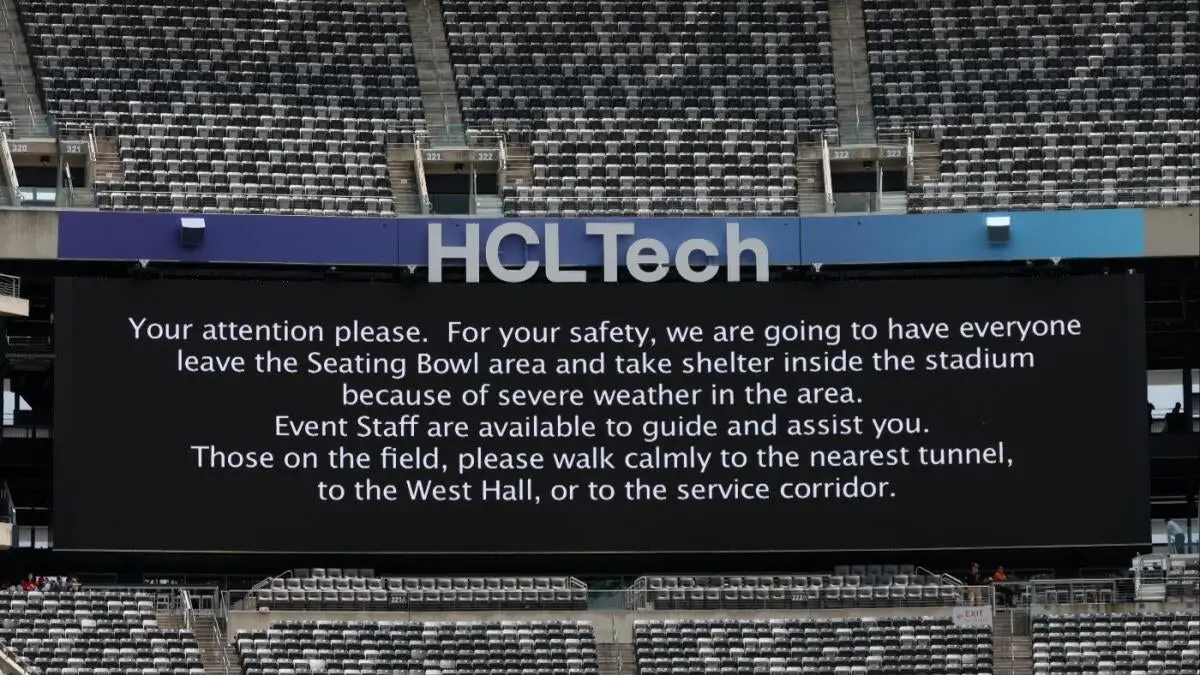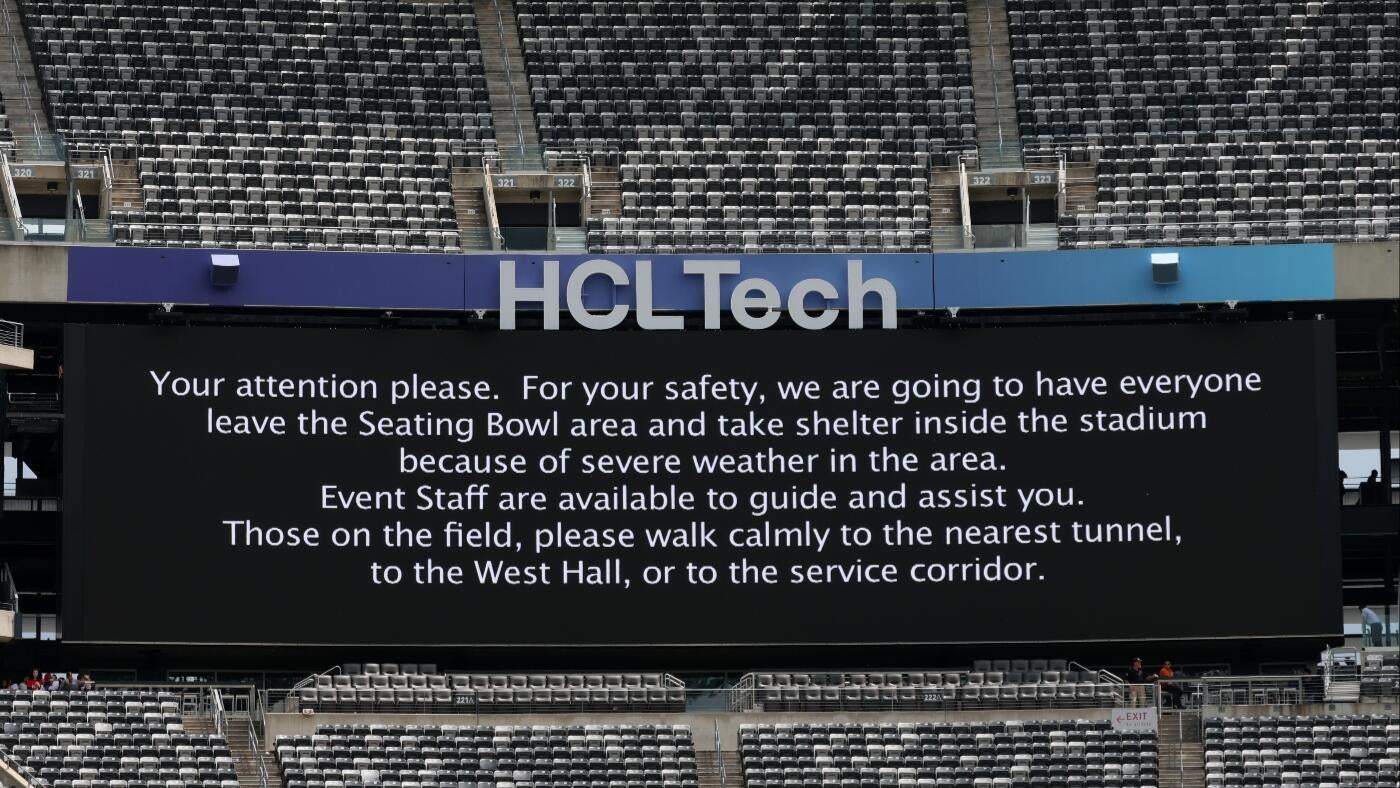

How extreme weather at Club World Cup is forcing teams to gameplan for more than just their opponents
How extreme weather at Club World Cup is forcing teams to gameplan for more than just their opponents

East Rutherford, NJ – It was the kind of heat and humidity that felt heavily, on the hanging Metlife Stadium and the surrounding environment as a balloon, ready to release with the heavy rainfall that came about half an hour after the last whistle. In other words, it was the kind of weather that turned on before the match or well-varied complaints.
“We are not only going to deal with our opponent, but also with the weather,” said Palmeiras manager Abel Ferreira clearly on Wednesday, about 24 hours before he was completely justified for his comments.
The Brazilian side took their first victory of the World Cup on Thursday in a 2-0 win against Al Ahly van Egypt, first benefiting from the 49th-minute goal of Wessam Abou Ali before replacing Jose Manuel Lopez scored 10 minutes later to close the deal. Ferreira was right to say that they would fight the opponent in what was sometimes an evenly covered match, quality shots little and far between for every side. They combined for 19 shots, but only three on goal, with Palmeiras getting the most out of their chances at the beginning of the second half for the goal.
However, the most striking battle was with the weather.
What started as a hot and humid day in the New York City region made way for a few lightning strikes of about an hour in the game, which caused a break in the game for about 45 minutes. It was perhaps far away from the mild temperatures and drizzle of the last two games in Metlife Stadium, including Palmeiras’ Opener against Porto on Sunday, but these circumstances have only been in the Club’s World Cup for six days. The temperature was 88 degrees at the kick-off in New Jersey and was about the same for the victory of Paris Saint-Germain in Atletico Madrid on Sunday in Pasadena’s Rose Bowl and Real Madrid’s draw with Al-Hilal on Wednesday in Miami Gardens’ Hard Rock Stadium. Neither was the weather delay unique – Mamelodi Sundowns’ victory on Ulsan HD On Tuesday had a delayed kick -off due to bad weather in Orlando’s Inter & Co Stadium, while there was a stopping in the middle of RB Salzburg’s victory over Pachuca in Cincinnati’s TQL Stadium on Wednesday,
Each of those teams was caught in the middle of the extreme of the summer weather outside, all of whom will all play a major role in next summer’s World Cup, co-organized by the country, as well as Canada and Mexico. It will add an extra low accommodation and preparation for the teams that make the trip, albeit for this year or next year’s tournament. Climate reality is somewhat unique for the country, even if the heat problems remind a Qatar’s circumstances that cleared the way for the first World Cup Winter. By selecting North America as a host for the World Cup of next year, FIFA will have to do with the inevitable climatic realities, although some of their own creation are.
Lightning-related delays fall into the first category, a natural result of hot and humid temperatures that are a characteristic of the American summers. There is a reason why Florida and Texas, two states that will organize competitions on the World Cup of next summer, are sometimes known as the “Lightning Capitals” of the US – there are few places as steaming as those in the summer months, although researchers suggest Climate change can increase the number of lightning strikes throughout the country.
Until now, the world weather delays at the World Cup of Club are geographically widespread, which asks unique questions for the teams that have to do with it. On Thursday in Oost-Rutherford, Palmeiras was already 2-0 against the time that the delay began, so that Al Ahly manager Jose Riveiro came out an unexpected idea-a fourfold replacement.
“It was not easy to return to the rhythm that the game played at the time,” said Riveiro after the game. “You also have to understand that most teams, including ourselves, come from very long seasons, the levels of energy are not at the best, so this kind of interruptions will clearly not help for the show.
“We came back with four subs, tried to start a new game, tried to look for new adjustments to be open, but we were not successful, but it was not because of the interruption. It was the same for Palmeiras as for us. The scenario looked better at that time to try the game and it played well for them.”
The score was not the only reason why Palmeiras was comfortable in defense after the weather delay. They had been in the habit for an hour at the time and came in a defensive form that surprised Ahly. Ferreira said that the shock value was part of the game plan, but their switch from the attack outing against Porto to these four days later was made with the heat in mind.
“That is why I often say that different opponents offer different results. I believed that we played better against Porto,” Ferreira said. “We had to take the weather into account. I don’t know if you could read the faces of the players, but they felt it again and the climate and that influenced them, but in the beginning, the first half, we were not really connection. We couldn’t really threaten the opponent.”
The heat was exacerbated by the fact that FIFA has planned the game for noon, a well -known cadence to endure broadcasters can show four games per day, so that overlapping can be avoided at all costs, even if that means that teams have to adjust their game plans. For Ferreira, which included something that he rarely does – make restingness, this time against the advice of his coaching staff.
“I don’t really like to change players during the break of the first half. I think this is disrespectful for the players because … It is as if you assume you didn’t make the right choice,” he said, “but I wanted to renew the team and I said I wanted to play on the strategic side yesterday [because] From the weather. “
The freshness has paid off, where Lopez came out of the couch for about 15 minutes after it and that Palmeiras could manage the post-retardation part of the competition as smoothly as possible.
“I think it is in favor of the team that wins when we have those breaks,” said Ferreira. “We had that 45 -minute break and then a break for hydration, but anyway, we tried to concentrate our players again. I told them that the game could change in two, three minutes, so I said they had to concentrate.”
Football



